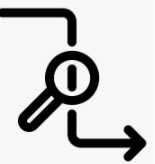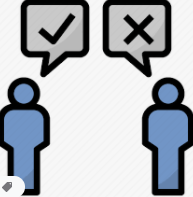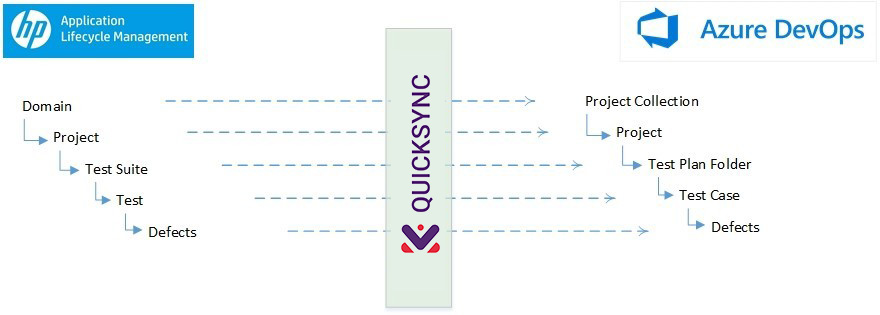In the current DevOps ecosystem, the choice of platform and collaboration between cross-functional teams is critical for an organization. Response to Incidence and Change management is the key to DevOps collaboration. ServiceNow is a market leader for IT service management and Azure DevOps is being adopted by more and more enterprises. For those reasons, this case study for Kovair’s work for a major global bank adoption is a good example for other enterprises contemplating to follow in their path.
Unique Integration Implementation
Kovair Team along with the Bank implemented some of the unique as well as very complicated scenarios through Omnibus. These kinds of implementations are utmost challenging and could only be achieved through a rich and robust ESB platform like Kovair Omnibus. The platform needs to support both Correlation and Aggregation data patterns. Some of the Unique complicated scenarios are as follows
- Populate Change request in ServiceNow based on Azure DevOps Work Item or Pipeline generation
- Email sent activities in ServiceNow Item are synched into Discussions in Azure DevOps work item. The email content can be with header and content as Click link
- Activating potential scheduling conflicts for a change request based on the configuration items (CIs), “planned start date”, and “planned end date” in scope for the change.
- Syncing composite data – Change Request and the Link(s) attached (User Story, Task, Issue) from Azure DevOps Work Item to ServiceNow Change Request
Data is extremely valuable for an Organization like Bank, then extracting that data, interpreting it and orchestrating between two diverse system is of utmost challenge! This implementation at this global bank is far beyond normal data integration done through normal ESB platform.
Business Value
The ServiceNow Change management integration with Azure DevOps will help the Bank to delegate appropriate changes to the IT environment effectively and much faster than before. Moreover, this ecosystem will also ensure that all day to day scheduling conflicts for a change request based on the configuration items (CIs) are mitigated through automation. The tracking and honoring the Change management workflow helps the bank to bring the changes in the end system effectively which otherwise may have experienced delays before their work can be deployed to production. Kovair Omnibus platform helps to achieve these end-to-end relationships cutting across the tools.
It also provides complete data for management reporting highlighting all the insights – that will help development and operations work more closely together as part of their journey to DevOps.
Ecosystems and the bridge between them
ServiceNow solution for Change Management helps an organization to understand the risk and work on it to minimize risks of changes to the IT environment. Overall, it is the process responsible for managing all changes to the production operations environment from inception to completion. These days, Change Management is viewed as an essential organizational process.
Azure DevOps is a platform for Development and Collaboration. It helps to connect different products, projects and teams associated with product development from testing to deployment. Typically, the internal teams manage User Stories at the early stages of development and Change request for the live production system in Azure DevOps.
Managing Integration between two ecosystems, where at each end there are complex workflows, rules and data is a big challenge. It requires a very deep level data integration where data flow across tools will create virtual workflow across the tool to achieve the business goals.
Kovair team worked with the bank for a few weeks and have achieved an optimum integrated system using Kovair Omnibus. The integrated system manages ServiceNow workflow, conflicts scheduling detection and configuration items resolution completely from Azure DevOps.

Complex Business Cases
Managing ServiceNow Template based on Azure DevOps CR Types Both the systems – Azure DevOps and ServiceNow are deeply integrated, and as a result dynamic Change Request types are mapped with ServiceNow Change Management templates like Standard, Emergency and Normal. Moreover, Change Request when synced with ServiceNow as a Change Request – the additional fields that are populated as part of the dynamic template are synced back to Azure DevOps so that the internal team understands the Change Request type in ServiceNow and its related priority data. Kovair Omnibus provides complete support for sync back for any number of rich data to the source data smoothly.
Both the systems – Azure DevOps and ServiceNow are deeply integrated, and as a result dynamic Change Request types are mapped with ServiceNow Change Management templates like Standard, Emergency and Normal. Moreover, Change Request when synced with ServiceNow as a Change Request – the additional fields that are populated as part of the dynamic template are synced back to Azure DevOps so that the internal team understands the Change Request type in ServiceNow and its related priority data. Kovair Omnibus provides complete support for sync back for any number of rich data to the source data smoothly.
Data Sync with Traceable Link  Change Request from Azure DevOps Sync to ServiceNow contains all the related User Stories and Task to ServiceNow in tabular structure to provide 100% visibility to the ServiceNow user and help them understand the impact of a Change Request which has been synced to ServiceNow. Syncing rich traceable data needs a rich platform to implement the complex traceable data.
Change Request from Azure DevOps Sync to ServiceNow contains all the related User Stories and Task to ServiceNow in tabular structure to provide 100% visibility to the ServiceNow user and help them understand the impact of a Change Request which has been synced to ServiceNow. Syncing rich traceable data needs a rich platform to implement the complex traceable data.
Detecting Conflict and Mitigation through automation Conflict detection in ServiceNow identifies potential scheduling conflicts for a change request based on the configuration items (CIs), “planned start date”, and “planned end date” in scope for the change. If a scheduling conflict occurs, conflict detection also checks for any related blackout or maintenance schedules and other active change requests to determine the scheduling conflict. Kovair Omnibus provides complete automation of raising conflict in ServiceNow from Azure DevOps.
Conflict detection in ServiceNow identifies potential scheduling conflicts for a change request based on the configuration items (CIs), “planned start date”, and “planned end date” in scope for the change. If a scheduling conflict occurs, conflict detection also checks for any related blackout or maintenance schedules and other active change requests to determine the scheduling conflict. Kovair Omnibus provides complete automation of raising conflict in ServiceNow from Azure DevOps.
Realtime Syncing of Work notes and Comments ServiceNow supports a rich set of end user attributes like Additional Comments, Work Notes, Email etc. as Journal attributes. ServiceNow Work notes attributes can be updated only by users with a specific role, whereas the Additional comments field can be updated by any user. This creates a separation between notes that are meant to communicate back and forth with the Azure DevOps. Kovair Omnibus supports all the different types of notes and Comments with its rich data.
ServiceNow supports a rich set of end user attributes like Additional Comments, Work Notes, Email etc. as Journal attributes. ServiceNow Work notes attributes can be updated only by users with a specific role, whereas the Additional comments field can be updated by any user. This creates a separation between notes that are meant to communicate back and forth with the Azure DevOps. Kovair Omnibus supports all the different types of notes and Comments with its rich data.
Conclusion
Digital Transformation is driving many organizations to adopt deep level integration between heterogenous complex platforms to achieve organization of business flow. The bank being a very large organization adopted Kovair Omnibus based on its capabilities to gain significantly from these two systems and aligned themselves to achieve organization goal of rapid mitigation of complex changes in the production system and benefit their customers tremendously. The Bank holistically wants to ensure that changes are recorded and evaluated, and that authorized changes are planned, prioritized, verified, implemented and documented in a controlled manner.







 Both the systems – Azure DevOps and ServiceNow are deeply integrated, and as a result dynamic Change Request types are mapped with ServiceNow Change Management templates like Standard, Emergency and Normal. Moreover, Change Request when synced with ServiceNow as a Change Request – the additional fields that are populated as part of the dynamic template are synced back to Azure DevOps so that the internal team understands the Change Request type in ServiceNow and its related priority data. Kovair Omnibus provides complete support for sync back for any number of rich data to the source data smoothly.
Both the systems – Azure DevOps and ServiceNow are deeply integrated, and as a result dynamic Change Request types are mapped with ServiceNow Change Management templates like Standard, Emergency and Normal. Moreover, Change Request when synced with ServiceNow as a Change Request – the additional fields that are populated as part of the dynamic template are synced back to Azure DevOps so that the internal team understands the Change Request type in ServiceNow and its related priority data. Kovair Omnibus provides complete support for sync back for any number of rich data to the source data smoothly.  Change Request from Azure DevOps Sync to ServiceNow contains all the related User Stories and Task to ServiceNow in tabular structure to provide 100% visibility to the ServiceNow user and help them understand the impact of a Change Request which has been synced to ServiceNow. Syncing rich traceable data needs a rich platform to implement the complex traceable data.
Change Request from Azure DevOps Sync to ServiceNow contains all the related User Stories and Task to ServiceNow in tabular structure to provide 100% visibility to the ServiceNow user and help them understand the impact of a Change Request which has been synced to ServiceNow. Syncing rich traceable data needs a rich platform to implement the complex traceable data. Conflict detection in ServiceNow identifies potential scheduling conflicts for a change request based on the configuration items (CIs), “planned start date”, and “planned end date” in scope for the change. If a scheduling conflict occurs, conflict detection also checks for any related blackout or maintenance schedules and other active change requests to determine the scheduling conflict. Kovair Omnibus provides complete automation of raising conflict in ServiceNow from Azure DevOps.
Conflict detection in ServiceNow identifies potential scheduling conflicts for a change request based on the configuration items (CIs), “planned start date”, and “planned end date” in scope for the change. If a scheduling conflict occurs, conflict detection also checks for any related blackout or maintenance schedules and other active change requests to determine the scheduling conflict. Kovair Omnibus provides complete automation of raising conflict in ServiceNow from Azure DevOps. ServiceNow supports a rich set of end user attributes like Additional Comments, Work Notes, Email etc. as Journal attributes. ServiceNow Work notes attributes can be updated only by users with a specific role, whereas the Additional comments field can be updated by any user. This creates a separation between notes that are meant to communicate back and forth with the Azure DevOps. Kovair Omnibus supports all the different types of notes and Comments with its rich data.
ServiceNow supports a rich set of end user attributes like Additional Comments, Work Notes, Email etc. as Journal attributes. ServiceNow Work notes attributes can be updated only by users with a specific role, whereas the Additional comments field can be updated by any user. This creates a separation between notes that are meant to communicate back and forth with the Azure DevOps. Kovair Omnibus supports all the different types of notes and Comments with its rich data.
